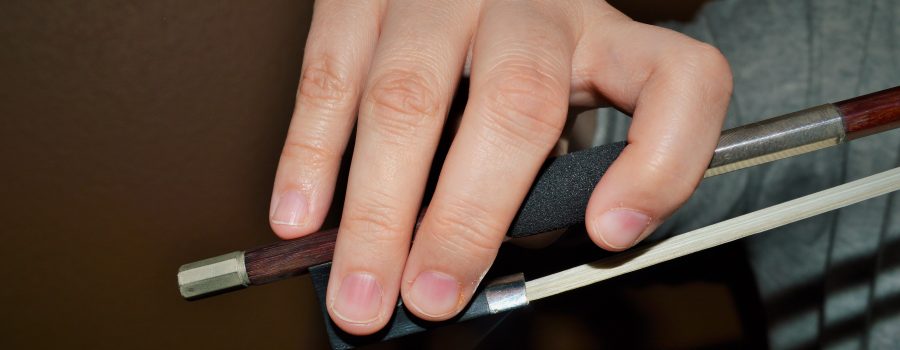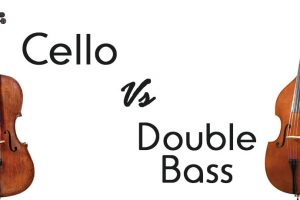The right hand holds the bow, which is manipulated across the strings to produce sound. Depending on the angle of the bow, it can stroke against any string or a combination of strings. The bridge, being curved, gives each string a distinct place within space allowing for each string to be sounded individually.

The bow consists of a piece of slightly flexible wood on which an amount of horsehair is mounted. It is held in and drawn using the player’s right hand. Before playing, the player adjusts a screw at one end of the bow to tighten the hair enough to allow it to make firm contact with the string. The hair is then lightly rubbed with a substance called rosin, made from treated tree resin hardened into a block. The rosin is sticky and allows the bow hair to grip the strings enough to set them vibrating when the bow is drawn across them.
The part of the string instrument where the bow actually touches the strings is between the end of the fingerboard and the bridge, which suspends the strings above the body and transmits their vibrations into this body in order to amplify them. Within this area the player can choose how far between these two points the bow will be drawn, in order to produce variations in volume and timbre: the closer to the bridge, the greater the volume.
The bow is drawn across the string in two ways: either from the frog to the tip, called a downbow, or from the tip to the frog, an upbow.
Naturally, the terms downbow and upbow come from the general direction that the bow is drawn across the string, from the perspective of the player. Because the bow is so versatile, there is rarely a “correct” bowing for any particular passage of music. One should therefore know all the possibilities and sounds that the bow can produce, and adjust his or her techniques according to the composer’s intentions.


